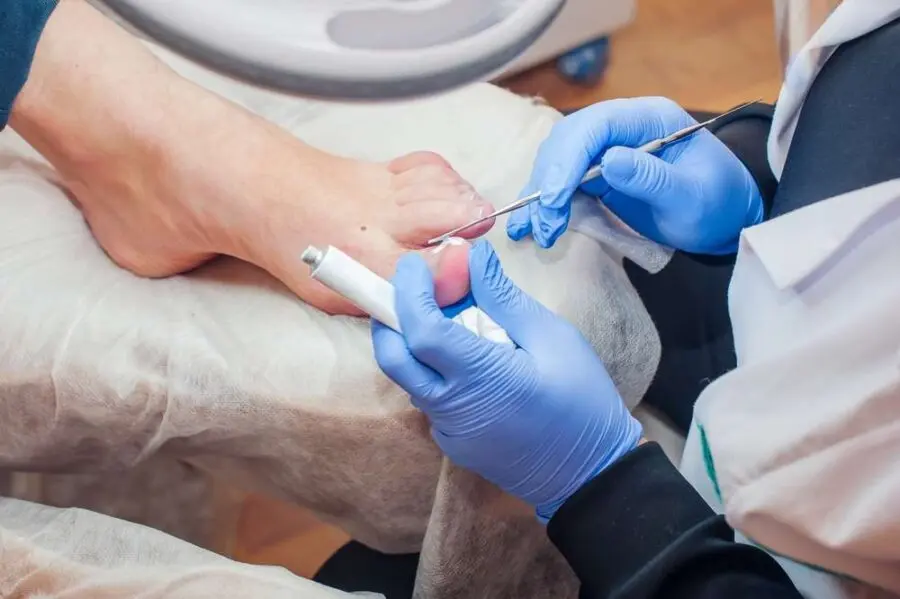
An ingrown toenail (onychocryptosis) is an inflammation caused by a portion of a nail (usually on the big toe) penetrating the surrounding skin.
While usually minor, it is nonetheless a common nail problem that can result in pain and inconvenience in your daily life. If the ingrown toenail is not treated, it may lead to inflammation and exacerbate the pain in the foot.
Do not worry, however, as there are a variety of useful therapies available to help you get rid of ingrown toenails and get your feet back on track. Learn more in this article.
Nail care
Medical nail clipping is one of the most traditional nail care procedures. Nail clipping is a common solution for ingrown toenail problems that is performed by a podiatrist or a specialized nurse (assistant). Professionals in the field of foot care can customize a cut to your nail’s condition.
Nail care, on the other hand, is more than simple nail trimming, as antibiotic creams or baths can also be used to reduce inflammation.
Therapeutic nail care allows you to:
- Ensure that the care is tailored to your specific needs.
- Have access to a high-quality service at all times;
- Use specialized instruments to make custom cuts;
- Rely on sterilized tools;
- Receive comprehensive medical treatment (from specialized cutting to nail surgery, if needed).
Orthonyxia (nail orthosis)
Special splints, known as orthonyxia, can be used to flatten or curl toenails. They consist of resin bands or tiny titanium tubes, to be precise.
Placed in such a way that they exert strain on the nail, they cause it to curve less as it develops. As a result, these splints alleviate pain by reducing the strain that the fingernail exerts on the toe.
These nail orthoses, in particular, allow you to:
- Enjoy a painless and minimally invasive treatment;
- Take advantage of a simple installation and relief;
- When surgery is not an option due to a medical condition, you can depend on an efficient alternative.
Ingrown toenail surgery (matricectomy)
Done in a podiatry clinic, ingrown toenail surgery is minimally invasive and provides adequate pain relief while preserving the appearance of the toes. Matricectomy is a painless operation that is performed under local anaesthesia on your toe.
The following are the five steps in this procedure:
- Our specialists first apply a local anesthetic on the affected toe;
- Then they prepare the toe for surgery;
- They pull out a few millimeters of the nail;
- Then they use the space created to burn off the root of the nail;
- Finally, they clean the area thoroughly before applying an antibiotic cream.
Depending on the anaesthetic used, your toe will be numb for 1 to 6 hours after the operation. During the anesthetic’s wear-off process, a tingling sensation is common. You can also experience tenderness in the surgically treated area.
Ingrown toenail surgery provides a number of benefits:
- You can work the day of surgery;
- You can go about your everyday activities;
- Your problem is solved for good;
- You get to keep your nail;
- You get a good looking result.
However, you should be aware of the following…
- For a span of 2 to 3 weeks, the wound must be disinfected;
- Pressure and tenderness in the toe may be caused by certain footwear.
- For the first week after your treatment, you are not allowed to engage in any athletic activities.
PiedReseau – Learn more
Do you have an ingrown toenail that needs to be removed? Do you want to know which therapies are most effective in achieving this? You will find a wealth of knowledge on this topic on our website.
If you have any questions, don’t hesitate to contact a podiatrist in your area.
Take care of your feet, they’re precious!